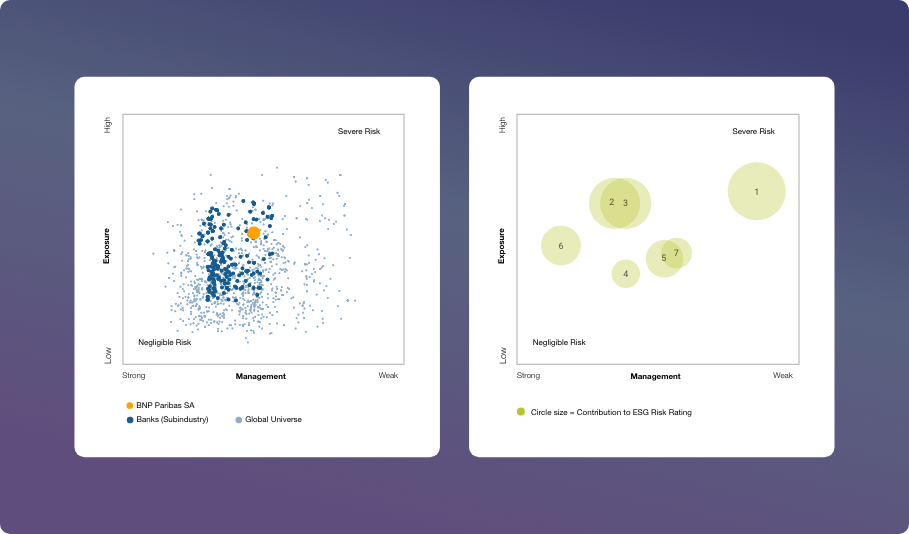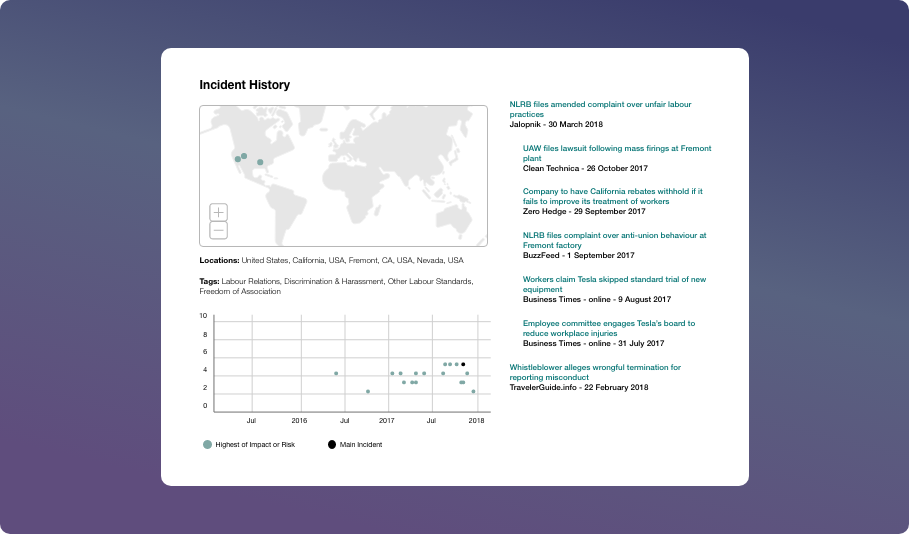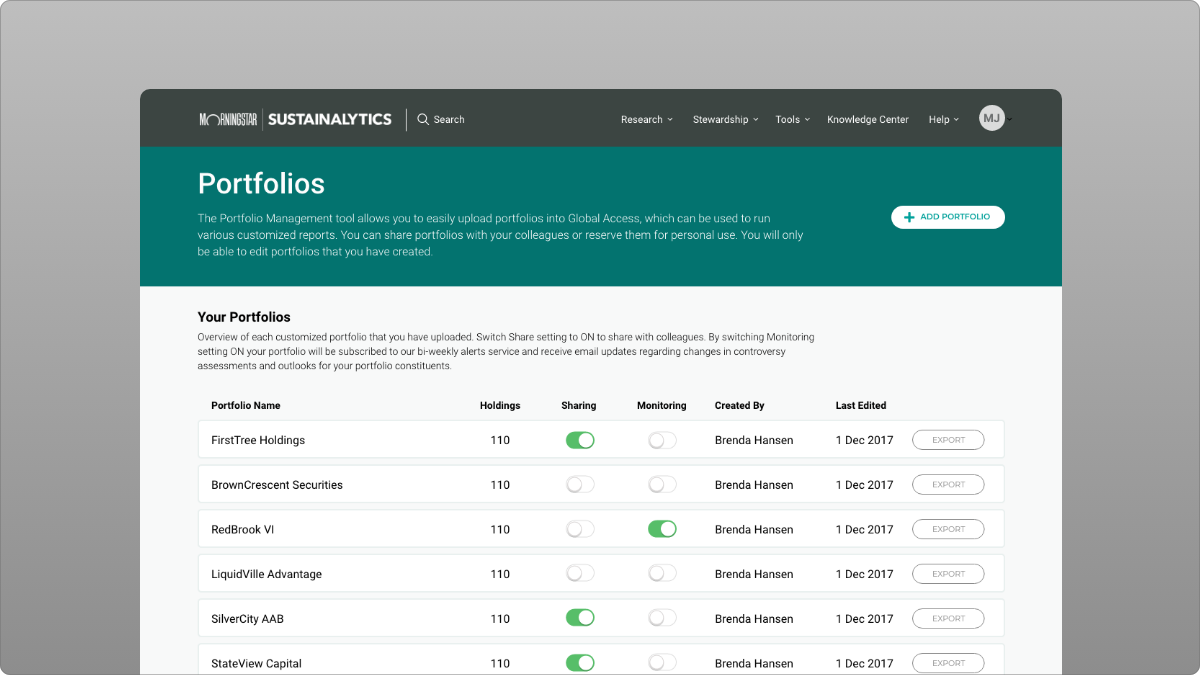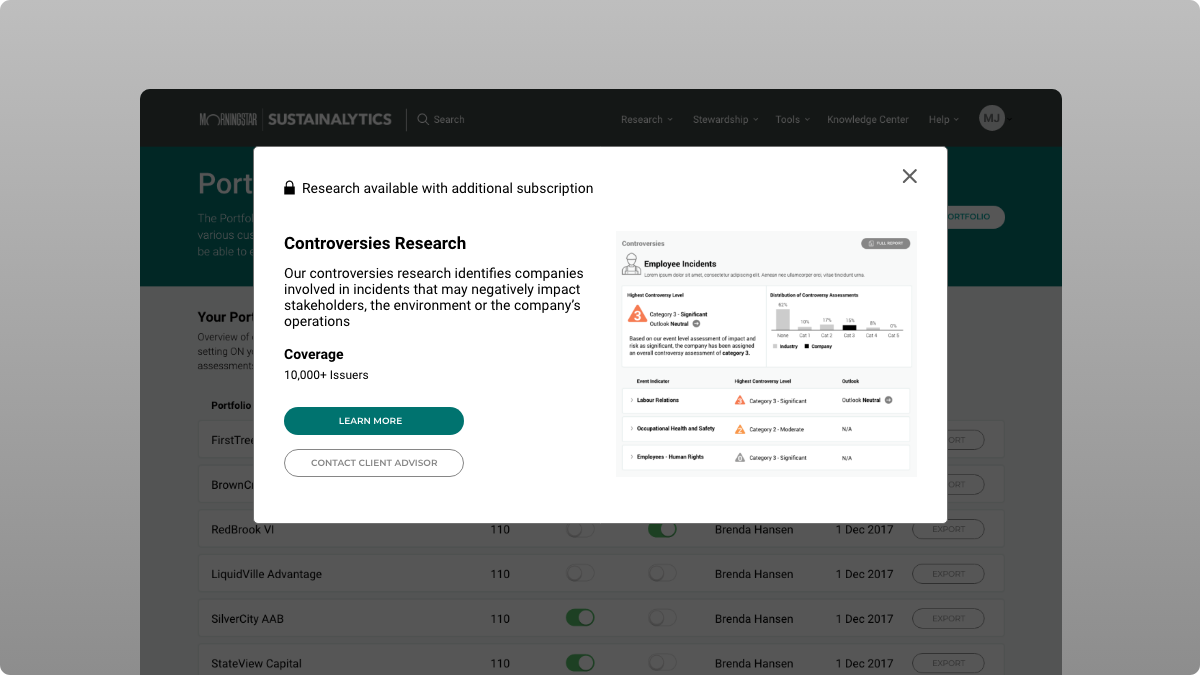Client Platform Redesign
A UX Revamp of a Client-Facing Platform
UX strategy | User research | Ideation & prototyping | Visual design
This case study delves into the modernization of the user experience and alignment of the digital interface with new products and services through the redesign of Global Access, Morningstar Sustainalytics’ primary client-facing platform.
Project goals
Modernize the User Interface
Transform Global Access by modernizing its user interface, creating a visually appealing and intuitive design that simplifies navigation and enhances user engagement, reflecting the innovative spirit of Morningstar Sustainalytics
Realign the User Experience
Strategically realign the user experience of Global Access to better meet the evolving preferences and behaviors of our clients. This involves optimizing every interaction on the platform to ensure it is user-centric, accessible, and engaging, ultimately boosting user satisfaction
Build Future-Readiness into the Platform
Develop the platform's future-readiness, ensuring it can easily adapt to and integrate new products and services. This forward-thinking approach aims to not only meet current user expectations but also accommodate future technological advancements and market developments, fostering growth and continuous innovation
Process
In the foundational stage of our project, guided by our UX process, we undertook a robust blend of qualitative and quantitative user research. This process was bolstered by a cross-functional collaboration with the marketing, sales, advisory, technology, and research teams. Through qualitative methods, we conducted detailed surveys and one-on-one interviews with a significant portion of our clientele. Simultaneously, we engaged in quantitative research by analyzing two years of user interaction data from Google Analytics. Our aim was to cultivate a deep understanding of prevailing user behaviors and trends.
Leveraging both qualitative insights from direct user feedback and quantitative data on user engagement, we crafted comprehensive user personas and journey maps.
Ideation and Concept Development
Leveraging insights from a detailed analysis of user pain points and opportunities, our team embarked on a strategic enhancement of the platform's user experience.
We prioritized the refinement of both global and local navigation systems, ensuring intuitive and seamless access to various sections of the platform.
Understanding the need for enhanced organization, we refined the platform's information architecture and introduced new research product categorizations.
This optimization ensures a more intuitive structure and facilitates smoother navigation, allowing users to effortlessly locate and engage with the research products.




To bring our data to life, we significantly enhanced visualization capabilities, providing more insightful, engaging, and actionable representations of complex datasets.
Additionally, we improved data export functionalities, enabling users to effortlessly integrate our data into their own analytical processes. These focused improvements are aimed at not only elevating the overall user experience but also empowering our users with the tools they need for more effective and efficient analysis.
Implementation
Design Challenges
Modernizing the User Interface without sacrificing usability. Creating a visually appealing design that also simplifies navigation poses the challenge of balancing aesthetic elements with functional simplicity
As the landscape of institutional investors continues to diversify, designing experiences and interactions that are universally accessible yet specifically tailored to our client base becomes increasingly complex.
Building Future-Readiness into the Platform with a scalable and flexible UX architecture. Anticipating future products and services without disrupting the existing user experience is a significant challenge. This requires a robust, modular design approach that allows for the seamless addition of new features or adjustment to emerging user needs and technologies.
Solutions and Implementation
Created a minimalist design system with reusable components that balance visual appeal with practicality. Use white space and progressive disclosure to simplify navigation and focus on key actions, ensuring functionality guides aesthetic choices.
Used persona-based designs informed by user research to tailor experiences for different institutional investor types. Incorporate adaptive UI elements that dynamically adjust to user interactions, offering customizable interfaces for a personalized experience.
Implemented a modular framework that supports easy integration and updates of components. Utilize a flexible grid system, microservices architecture, and responsive design principles to ensure the platform can evolve without disrupting the user experience. Feature flags should facilitate gradual feature rollouts based on user feedback, maintaining adaptability for future needs.




Testing and Feedback
Throughout the entire product design process, usability testing played a crucial role, ensuring that feedback from both internal and external users was systematically gathered and incorporated. This continuous loop of testing and feedback integration was pivotal in refining and enhancing the final design to meet and exceed user expectations at every stage.
Results and Impact
The implementation of our UX solutions has led to transformative results and a significant impact on the project. By seamlessly balancing aesthetics with functionality, our design system has not only enhanced visual appeal but also improved navigation efficiency, resulting in a more intuitive user experience.
Tailoring the platform to diverse user needs through persona-based design and a modern UI elements has increased user satisfaction and engagement, ensuring that every interaction feels intuitive and relevant.
Furthermore, the modular framework has future-proofed the platform, allowing it to adapt to emerging trends and user feedback without disruption. These strategic UX interventions have collectively elevated the overall quality of the platform, driving better user retention rates, increased productivity, and positioning the platform as a leader in user-centric design within its market.
Thanks for reading!
I'd gladly provide a detailed walkthrough upon request.



